INDIAN ARMED FORCES CHIEFS ON OUR RELENTLESS AND FOCUSED PUBLISHING EFFORTS

The insightful articles, inspiring narrations and analytical perspectives presented by the Editorial Team, establish an alluring connect with the reader. My compliments and best wishes to SP Guide Publications.

"Over the past 60 years, the growth of SP Guide Publications has mirrored the rising stature of Indian Navy. Its well-researched and informative magazines on Defence and Aerospace sector have served to shape an educated opinion of our military personnel, policy makers and the public alike. I wish SP's Publication team continued success, fair winds and following seas in all future endeavour!"

Since, its inception in 1964, SP Guide Publications has consistently demonstrated commitment to high-quality journalism in the aerospace and defence sectors, earning a well-deserved reputation as Asia's largest media house in this domain. I wish SP Guide Publications continued success in its pursuit of excellence.
Aerial Might on Show
The aim of Exercise Iron Fist 2016 was to send a clear message to potential adversaries that the IAF does possess the capability to deliver a crippling blow
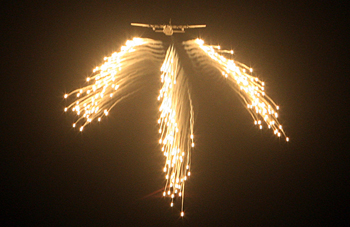
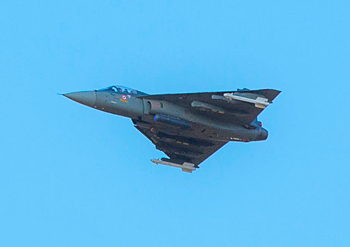
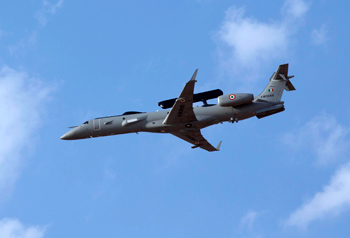
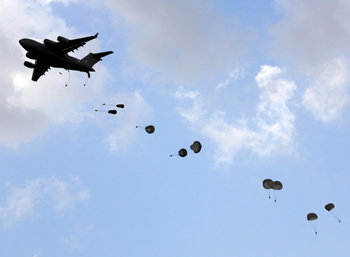
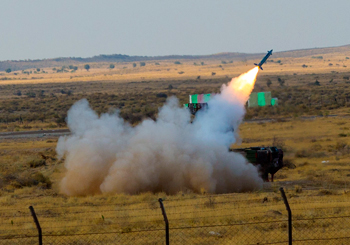
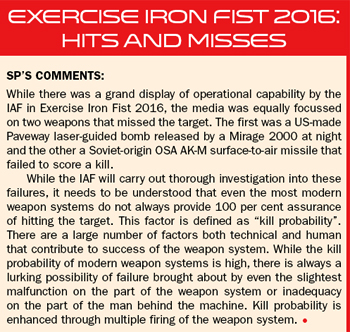
On Friday, March 18 this year, the Indian Air Force (IAF) showcased its all-round operational capability inclusive of firepower in a day and night air exercise code named ‘Iron Fist 2016’. The display of aerial might of the IAF that lasted for four hours was staged at the Pokhran firing range in Jaisalmer district of Rajasthan. The historic event which was of special significance as it projected the pre-eminent role of the IAF in war.
The demonstration was witnessed by President Pranab Mukherjee, the Supreme Commander of the Indian Armed Forces, as well as Prime Minister Narendra Modi. Other civilian dignitaries present were Manohar Parrikar, the Minister of Defence, Kalyan Singh, Governor of Rajasthan, and Vasundhara Raje, Chief Minister of the state. Also present at the venue as special invitees were General Dalbir Singh, Chief of the Army Staff, Admiral R.K. Dhowan, Chief of the Naval Staff, as also a number of other senior functionaries of the Indian armed forces as well as defence attachés from several countries. What was noteworthy was that the defence attachés of both China and Pakistan were conspicuous by their absence! In fact, they were not invited for the event as there has so far been total absence of reciprocity between India and the two adversaries Pakistan and China in respect of extending invitation to each other’s defence attachés for such events. This is somewhat incongruous from the Indian point of view, as not inviting the defence attachés of the two adversaries militates against one of the principal national objectives of this flagship air exercise which is that it ought to serve as a deterrence for both Pakistan and China against any possible plans for misadventure.
The Pokhran Test Range
The firing and test range in the vicinity of the small city of Pokhran is a remote location in the Thar Desert in Rajasthan and is the largest such facility in India. It came into limelight when on May 18, 1974, India conducted its first successful underground nuclear test code-named ‘Smiling Buddha’ which involved detonation of a nuclear weapon. Twenty-four years later, on May 11, 1998, Pokhran witnessed the second round of underground nuclear tests which involved detonation of five nuclear weapons of which one was a fusion bomb and the remaining four being fission bombs. The second nuclear test was initially named as ‘Operation Shakti 98’ and was renamed later as ‘Pokhran II.’ As a facility for conducting tests in the process of the development of nuclear weapons, the range at Pokhran has come to be symbolically associated with the philosophy of ‘deterrence’.
Inaugural Address by the CAS
The first time that the IAF conducted Exercise Iron Fist was at Pokhran on February 22, 2013. During this exercise, the IAF showcased more than 100 aircraft and 30 different weapon platforms, the primary objective being to display network-centric operations capabilities. At the commencement of Exercise Iron Fist 2016, Air Chief Marshal Arup Raha, Chief of the Air Staff (CAS) and Chairman, Chiefs of Staff Committee, extended a warm welcome to all the guests present and stated that the primary objective of the exercise this year was to reassure the nation about the capabilities and commitment of the IAF to safeguard national interests. He went on to say that the IAF was moving forward on a path to complete transformation to meet with the challenges it is likely to be called upon to confront in the future. While there were certain constraints and impediments in this journey, on its part, the IAF would leave no stone unturned to ensure a high combat potential through rapid modernisation. He said further that the display of airpower about to be witnessed was “merely the tip of an iceberg when compared to the overall capability of the IAF”.
Display of Operational Capability
Altogether, there were 181 aircraft, a mix of fighters, transport and helicopters which participated in Exercise Iron Fist 2016 to showcase all aspects of airpower the nation possesses. The air display was packaged into six themes that covered transformation of the IAF over the years, net-enabled operations, air defence operations, combat support operations, flying displays and all-weather operations. The aim of the exercise was to send a clear message to potential adversaries of the nation that the IAF does possess the capability to deliver a crippling blow on the enemy if and when required. The total of 103 fighter aircraft which participated in the exercise included the Su-30MKI, Mirage 2000, MiG-29, Jaguar, MiG-27 UPG, MiG-21 Bison and the Hawk advanced jet trainer. A total of 59 helicopters that took part included the different variants of the Mi-17, Mi-35 attack helicopters, the indigenous Dhruv advanced light helicopters (ALH) and the light combat helicopter designed, developed and manufactured by the Indian aerospace major the Hindustan Aeronautics Limited (HAL). This platform is yet to be cleared for induction into the Indian armed forces.
The event began with a fly-past that symbolised the journey of the IAF over the last eight decades. It began with a MiG-27 aircraft flying past towing the Exercise Iron Fist banner and was followed by a MiG-29 aircraft making a supersonic run. A Jaguar aircraft was next in line to fly by. The fly-past also included a vintage Tiger Moth piston engine biplane that was one of earliest platforms to be employed for training of military pilots in India. This was followed by the Pilatus PC-7 Mk II, the latest turboprop trainer aircraft that was procured from Switzerland and inducted into the IAF in 2013 for flying training in the basic stage. Fly-past by a mixed formation consisting of a MiG-21 Bison, upgraded MiG-27, MiG-29 and the Su-30MKI symbolised the transformation of the IAF over the years.
Net-centric warfare capability of the IAF was showcased through a fly-past by the indigenously developed airborne early warning and control system based on the Embraer 145 platform. Also on air display was the Phalcon radar equipped IL-76 airborne warning and control system (AWACS) aircraft. The fly-past was followed by a demonstration of offensive strike capability by way of synchronised multiple aircraft weapon delivery demonstration of precision-based bombing at simulated enemy targets by Mirage 2000, Su-30, MiG-27 UPG and the Jaguar aircraft.
In the regime of Air Defence, operational capability was demonstrated through multi-layered operations which consisted of a fly-past by an IL-78 flight refuelling aircraft (IL-78 FRA) along with two Su-30MKI aircraft in close formation flown when refuelling in flight. Not to be left behind, the indigenousy designed, developed and built light combat aircraft Tejas Mk I also showcased its swing role operational capabilities by delivering laser guided bombs on a target on the ground followed by firing an air-to-air missile, engaging both targets with remarkable precision. This phase of the exercise also included display of surfaceto-air guided weapons such as the IGLA shoulder-fired missile system and the OSA-AK missiles striking down airborne targets successfully.
One of the major tasks assigned to the IAF is to provide fire support as well as logistic support to surface forces. In this phase of the exercise, targets simulating the enemy’s vital assets were attacked by ground support aircraft of the IAF both in the fixed and rotary wing regime. The capability of undertaking airborne assault operations with the C-130J Super Hercules aircraft was also demonstrated. There was also a spectacular simulation of a combat search and rescue operation carried out by the IAF’s versatile helicopters, the Mi-35, Mi-25 and the latest induction, the Mi-17V5.
Capability of all-weather operations was demonstrated after nightfall when targets were engaged by fighters, transport aircraft and helicopters using rockets as well as bombs. Slithering operations and combat free fall during the night phase clearly demonstrated the tactics the IAF could employ for the insertion of troops in the enemy territory undetected. The Akash missile firing was a first in the history of firepower demonstration. The exercise inched towards completion by an awe-inspiring display of flare dispensing by a C-130J Super Hercules and an An-32 aircraft. The final event of the exercise was the awesome display of firepower by a MiG-27 UPG aircraft.
The Final Word
The inaugural address by the CAS that undoubtedly was inspiring may serve to alleviate albeit partially, the anxiety generated in the nation following the statement by Air Marshal B.S. Dhanoa, Vice Chief of the Air Staff (VCAS). In a media briefing on March 10, 2016, the VCAS stated that the IAF did not have sufficient number of combat aircraft to tackle a combined threat from China and Pakistan. While there was considerable dismay at the statement by the VCAS, there is no denying the fact that with the retirement of the older fleets of MiG-21 and Mig-21 aircraft over the next few years, the combat fleet of the IAF is expected to shrink rapidly. The problem is compounded by the fact the efforts by the IAF to induct the next-generation combat aircraft have not succeeded so far. Besides, the LCA is yet to obtain final operational clearance and the time frame for its availability in the numbers required, remains uncertain. It is about time that the political leadership took serious note of the impending catastrophe that is likely to befall the IAF in respect of its combat potential and initiate remedial action urgently without further dithering.
While Exercise Iron Fist 2016 was a grand show of the operational capabilities and firepower of the IAF, it needs to be remembered that it was only a structured display of aerial might and not really a test of capability against a formidable enemy in a situation of full-scale international conflict. The IAF will be faced with a real and daunting challenge if and when it is embroiled in a conflict with the Pakistan Air Force or with the People’s Liberation Army Air Force of China in the event of a war between India with one of the two nations or the two together. It needs to be understood that today, all is clearly not well with the IAF and one should not be lulled into complacency about its operational capability based on what one witnessed at Pokhran. In fact, there is need for not only serious introspection, but determined and effective action to provide the IAF with the capability it would require to meet with the challenges to national security that it would be expected to face in the future.





